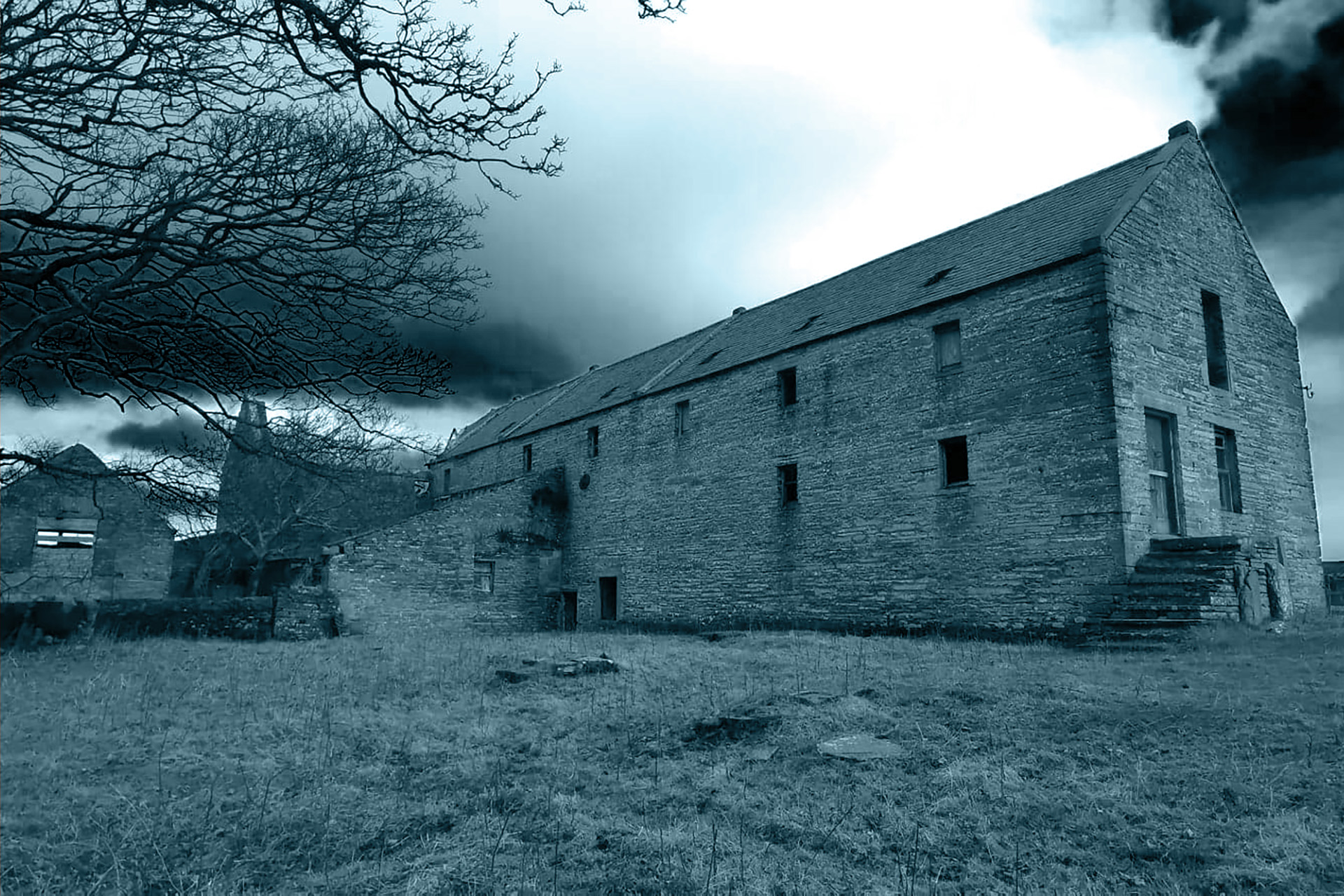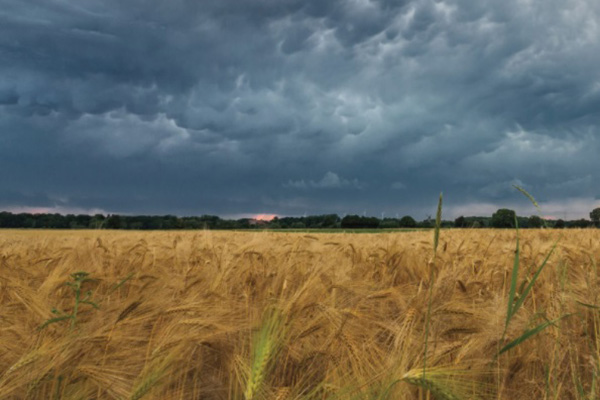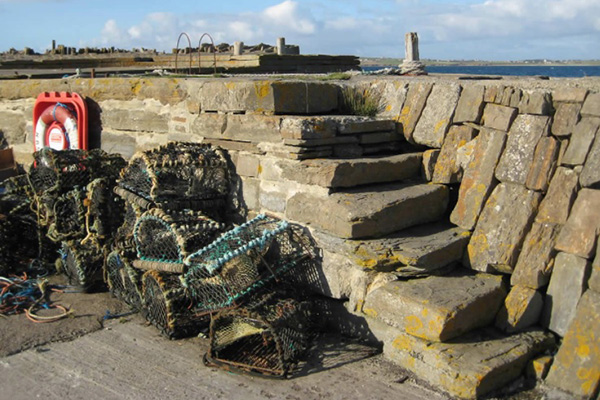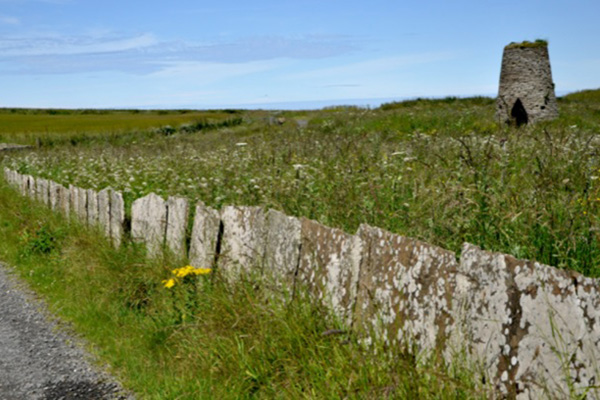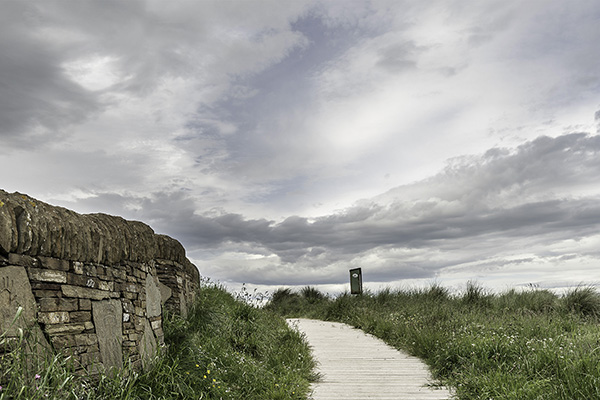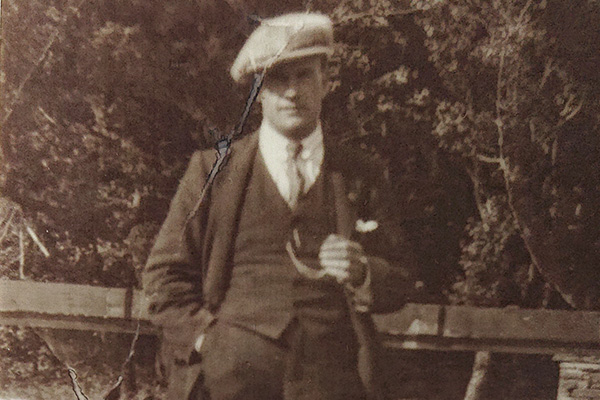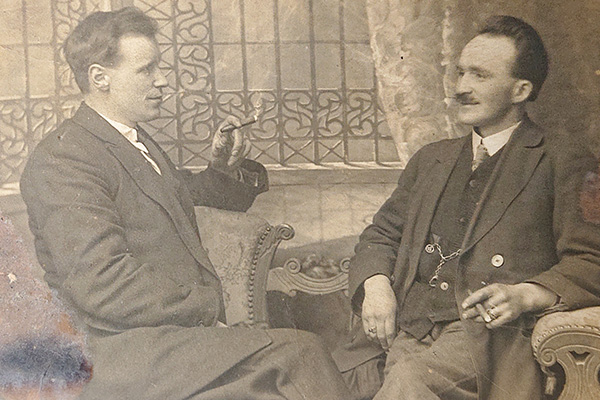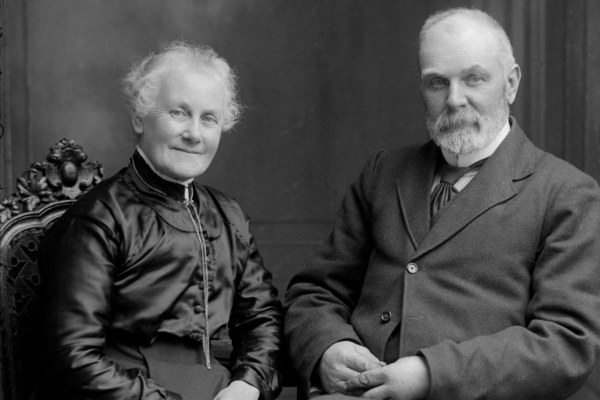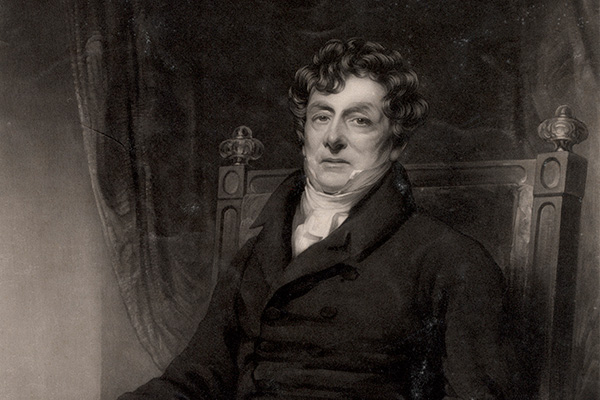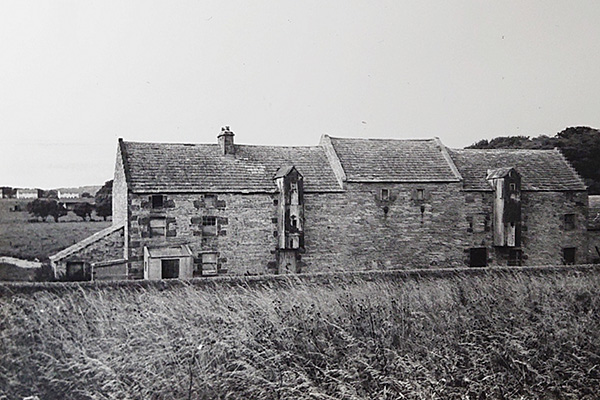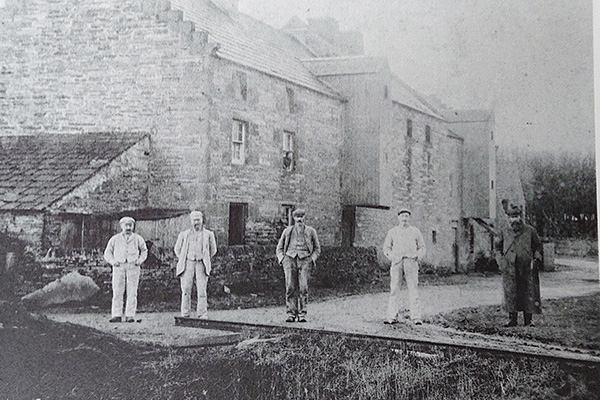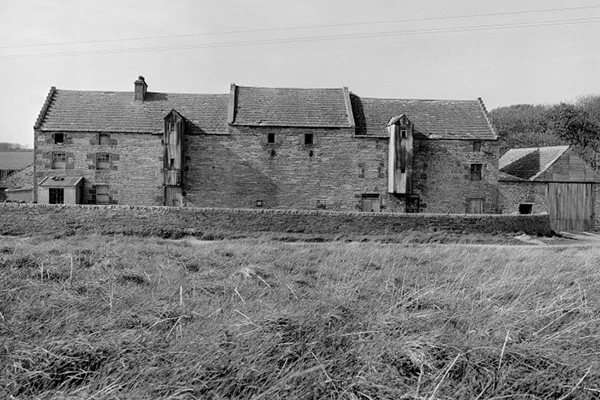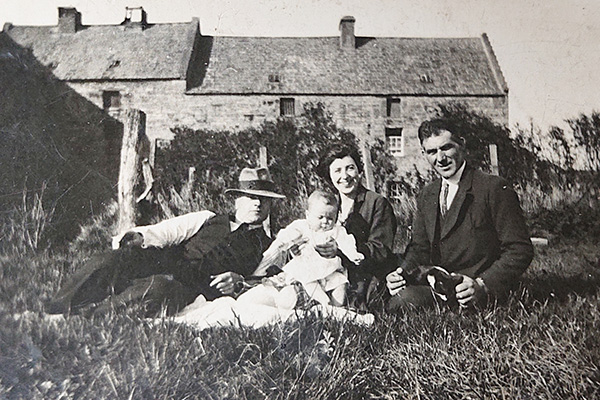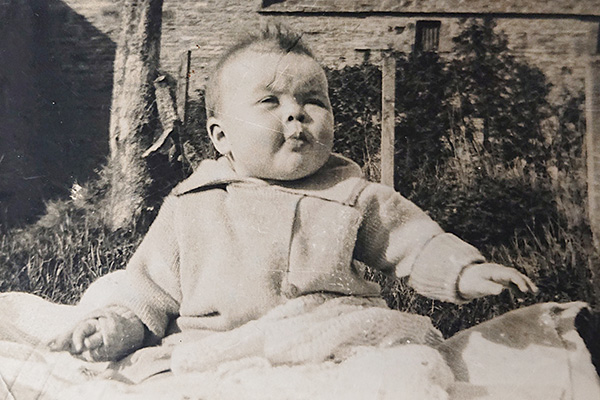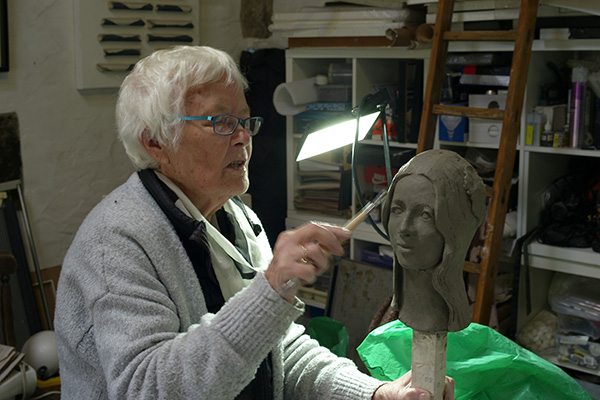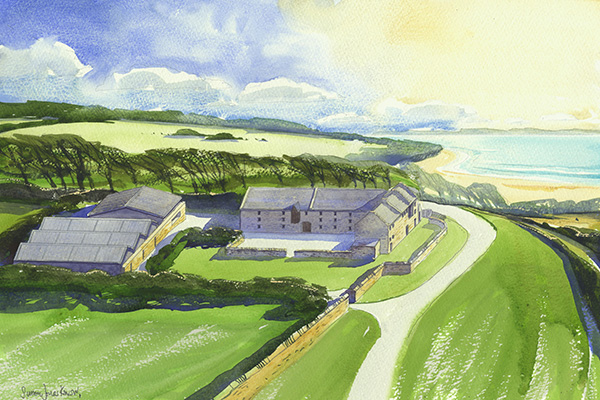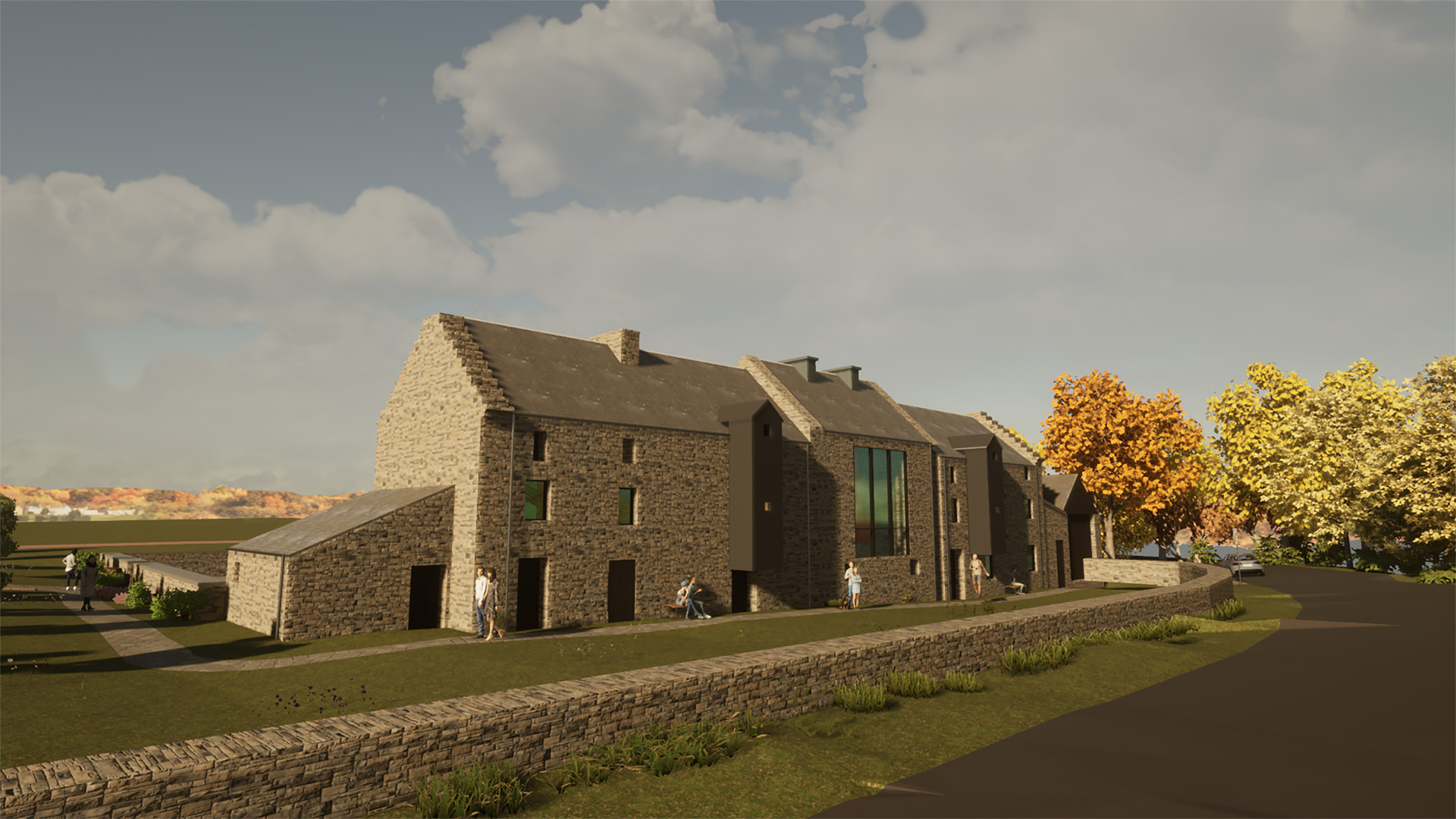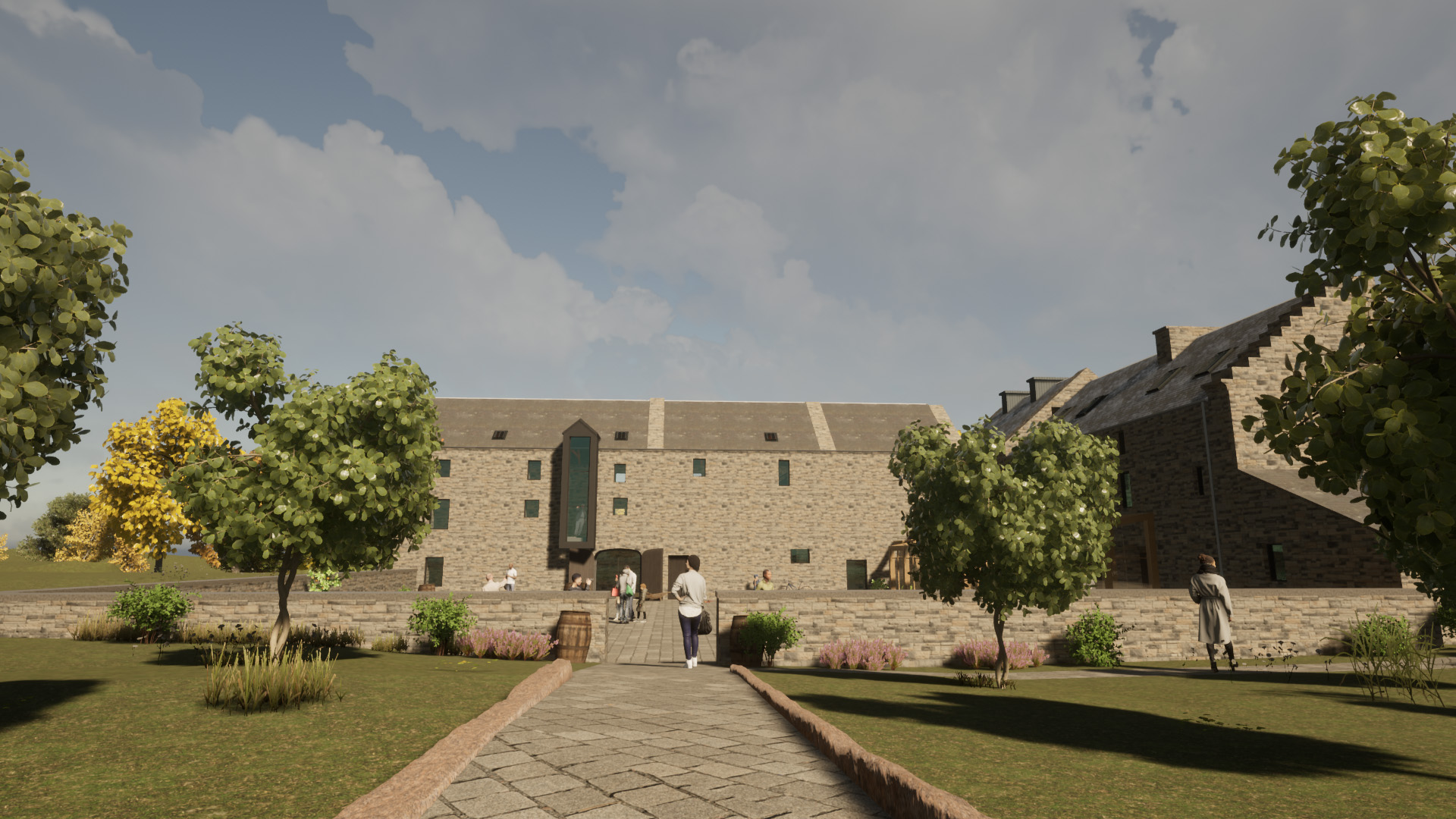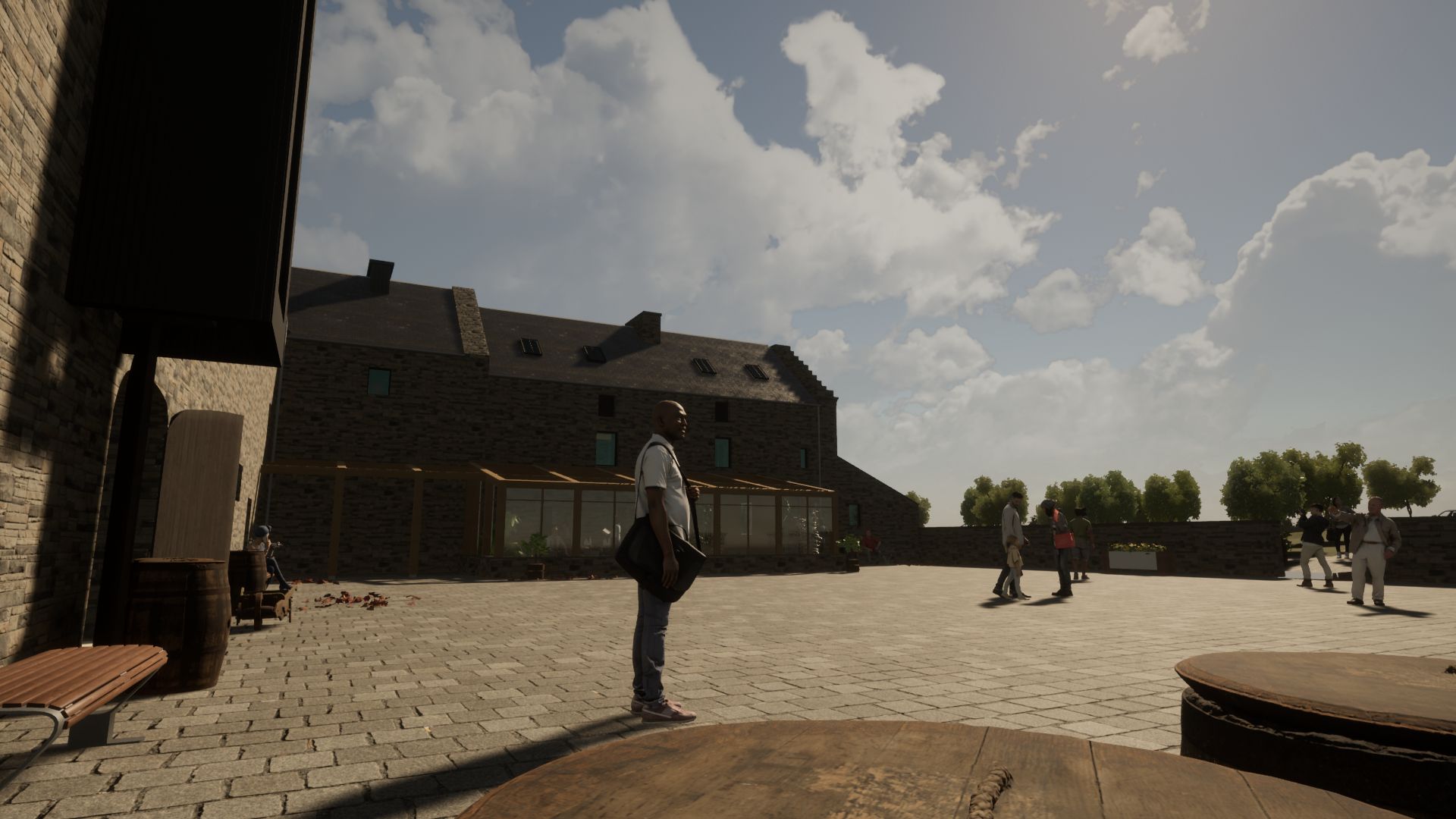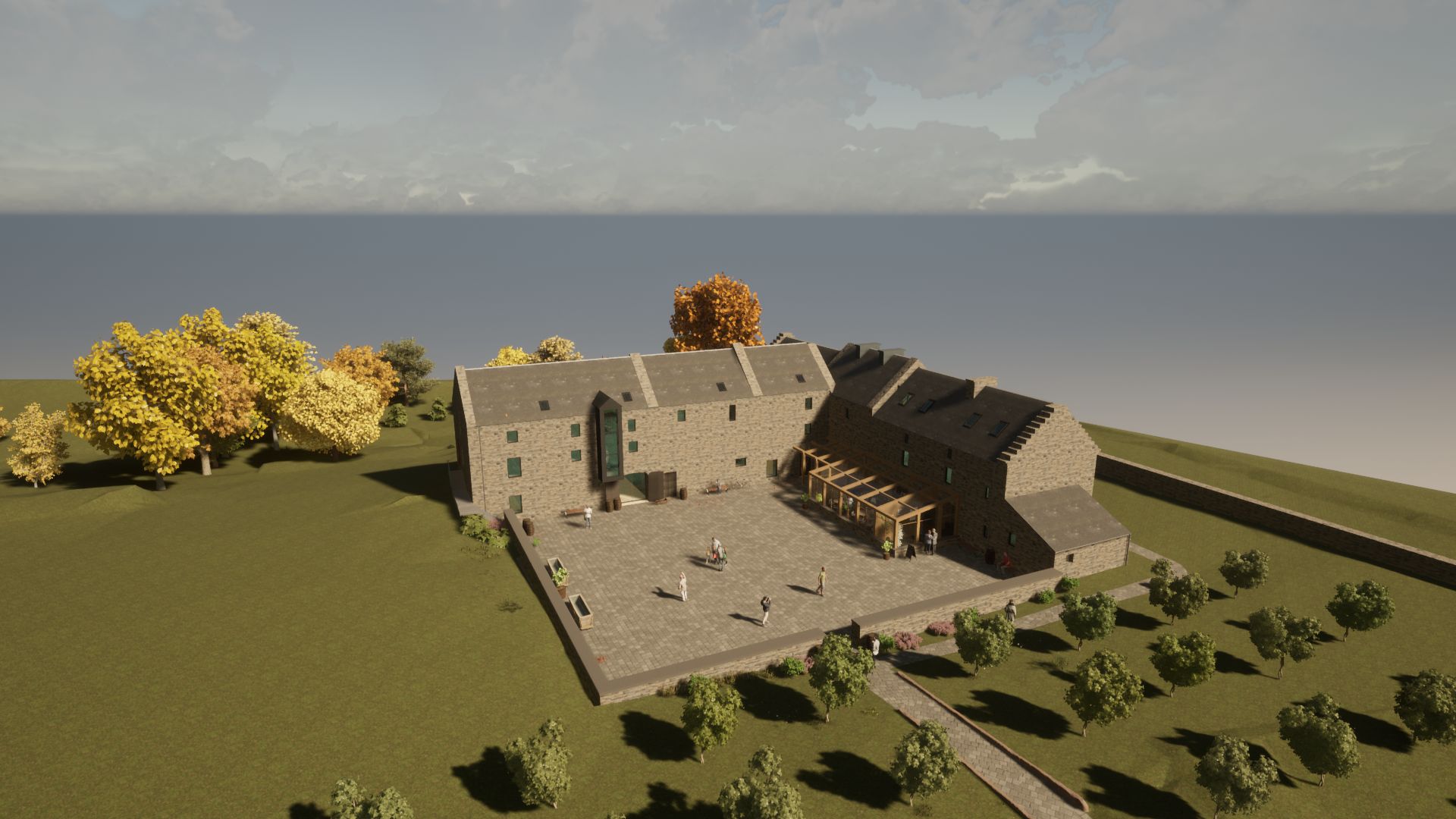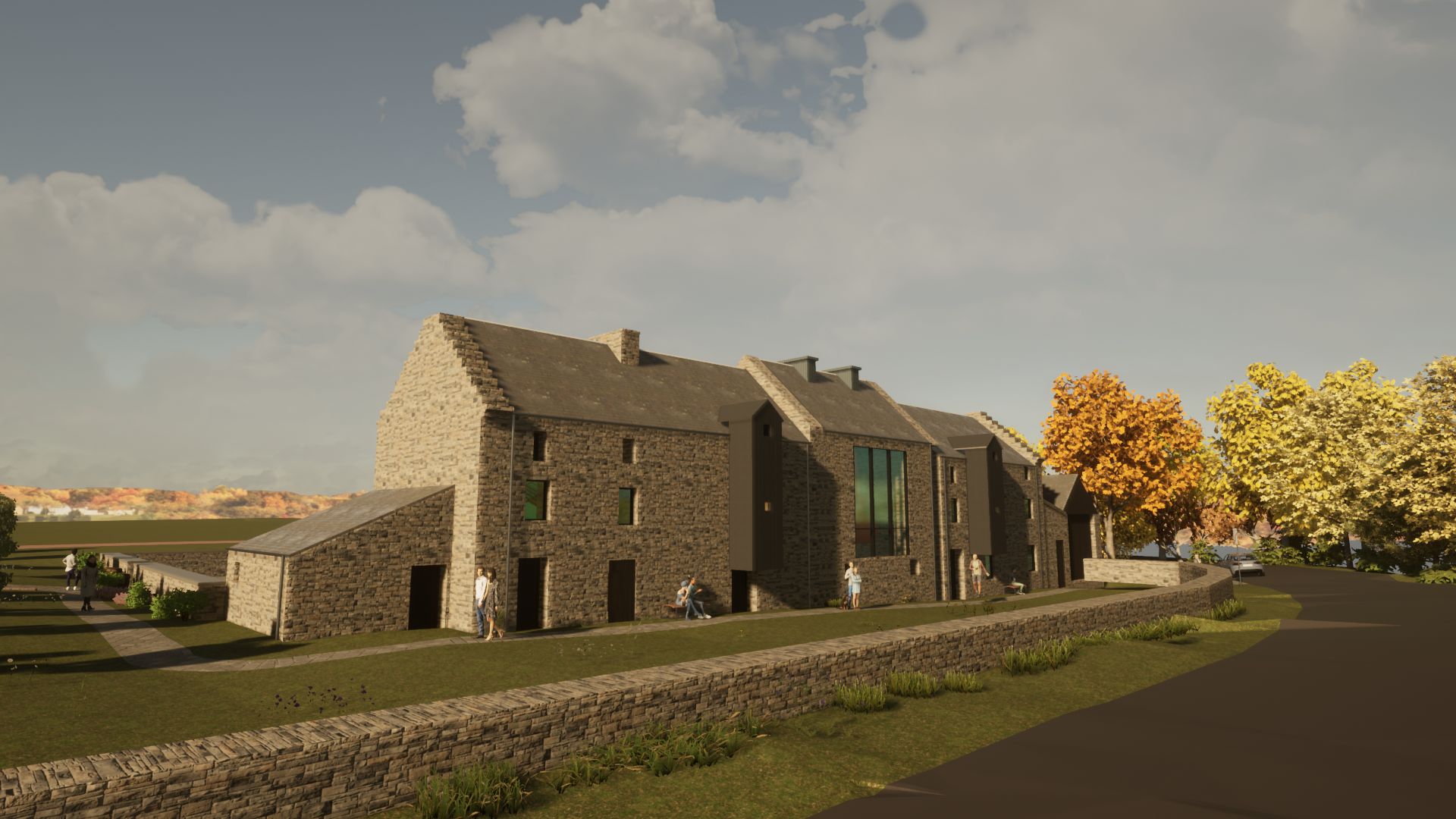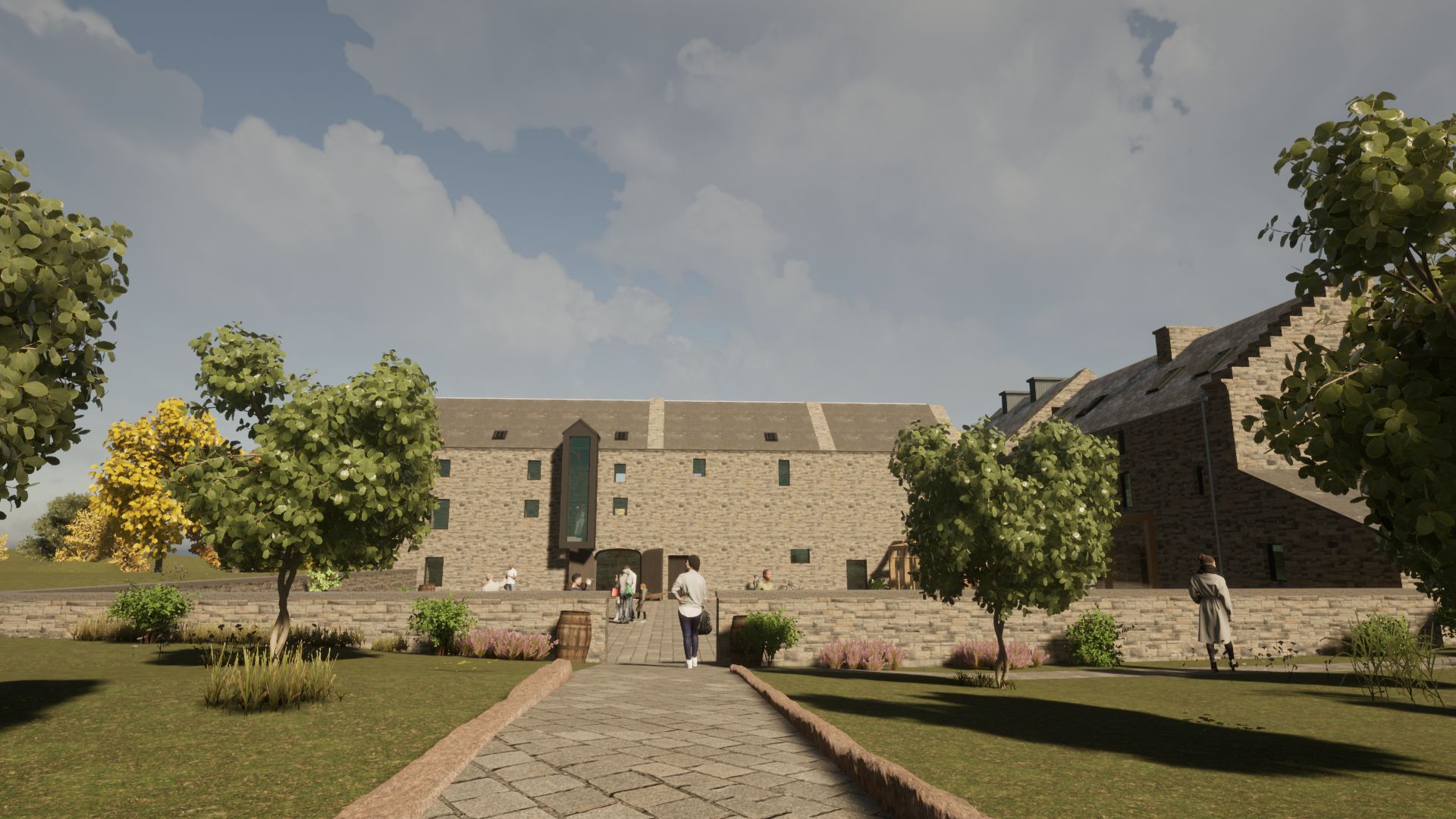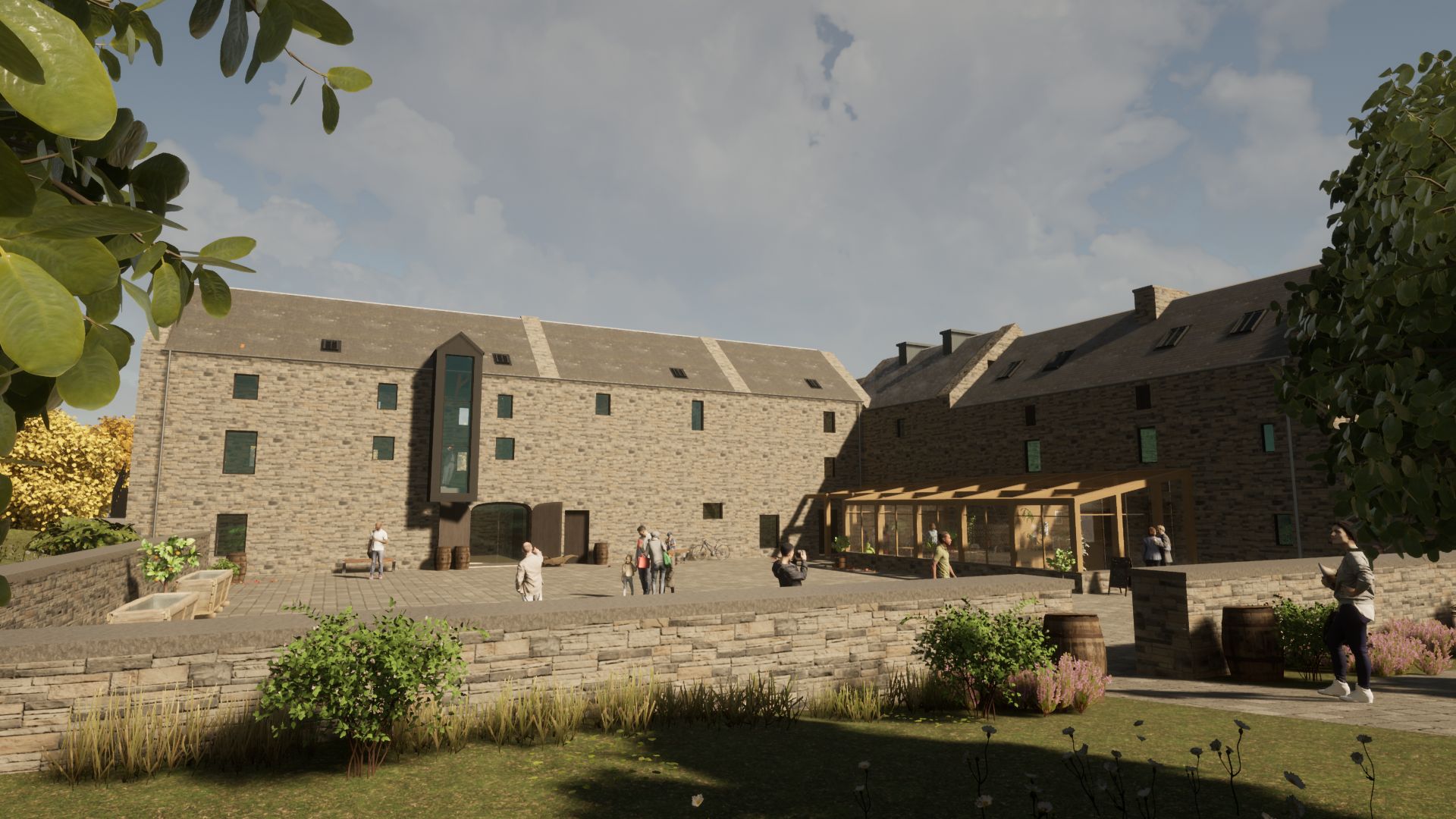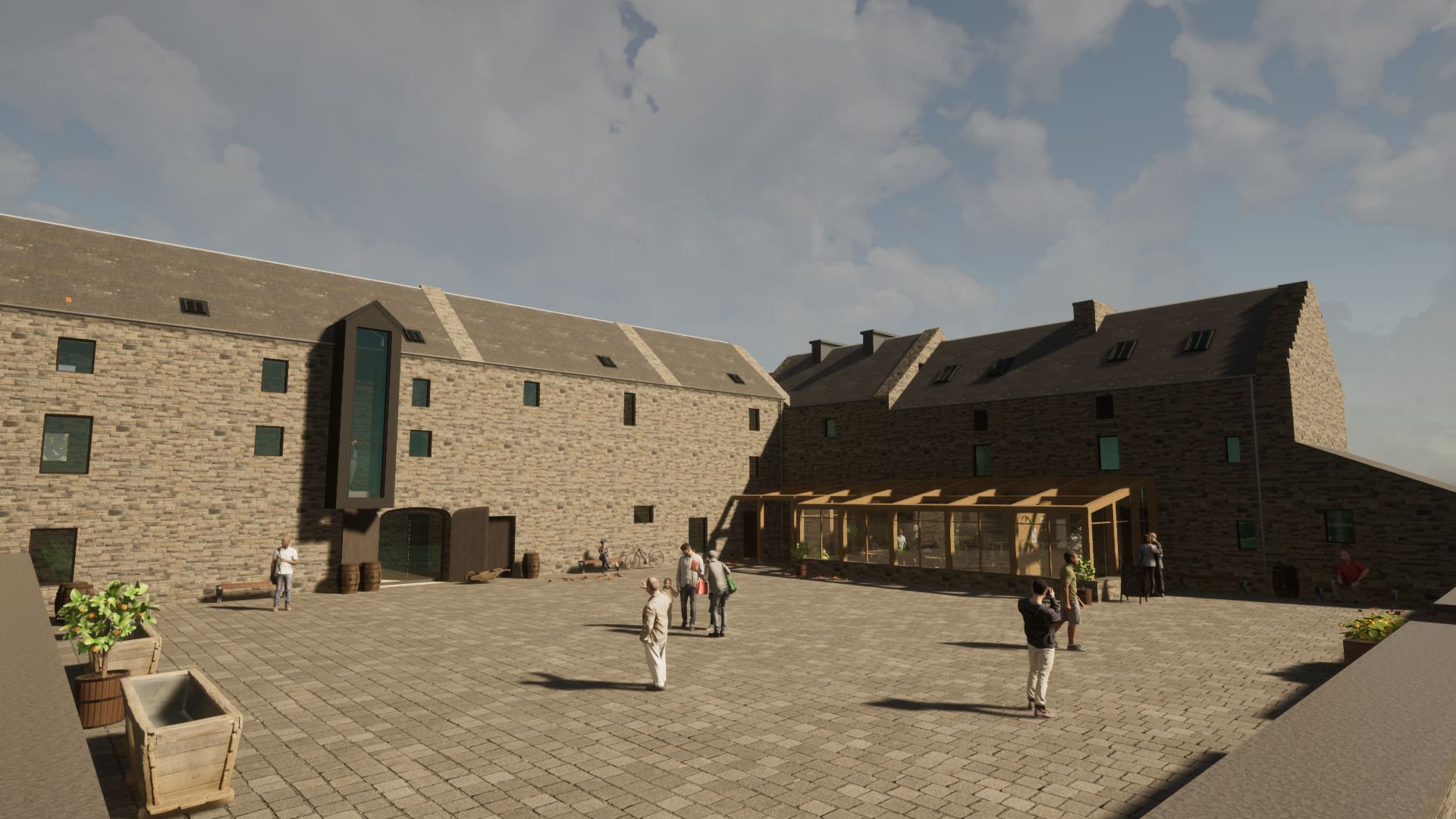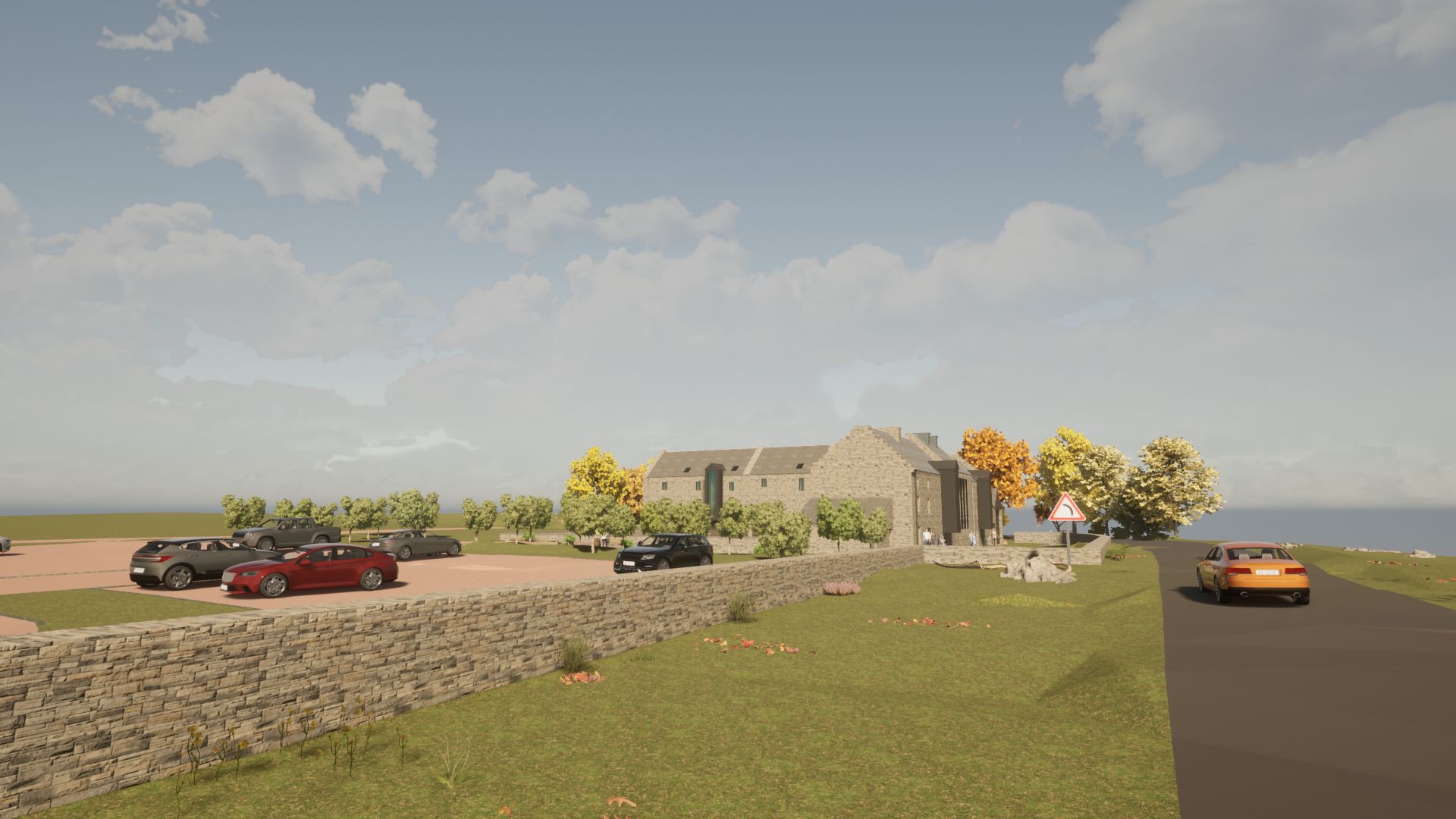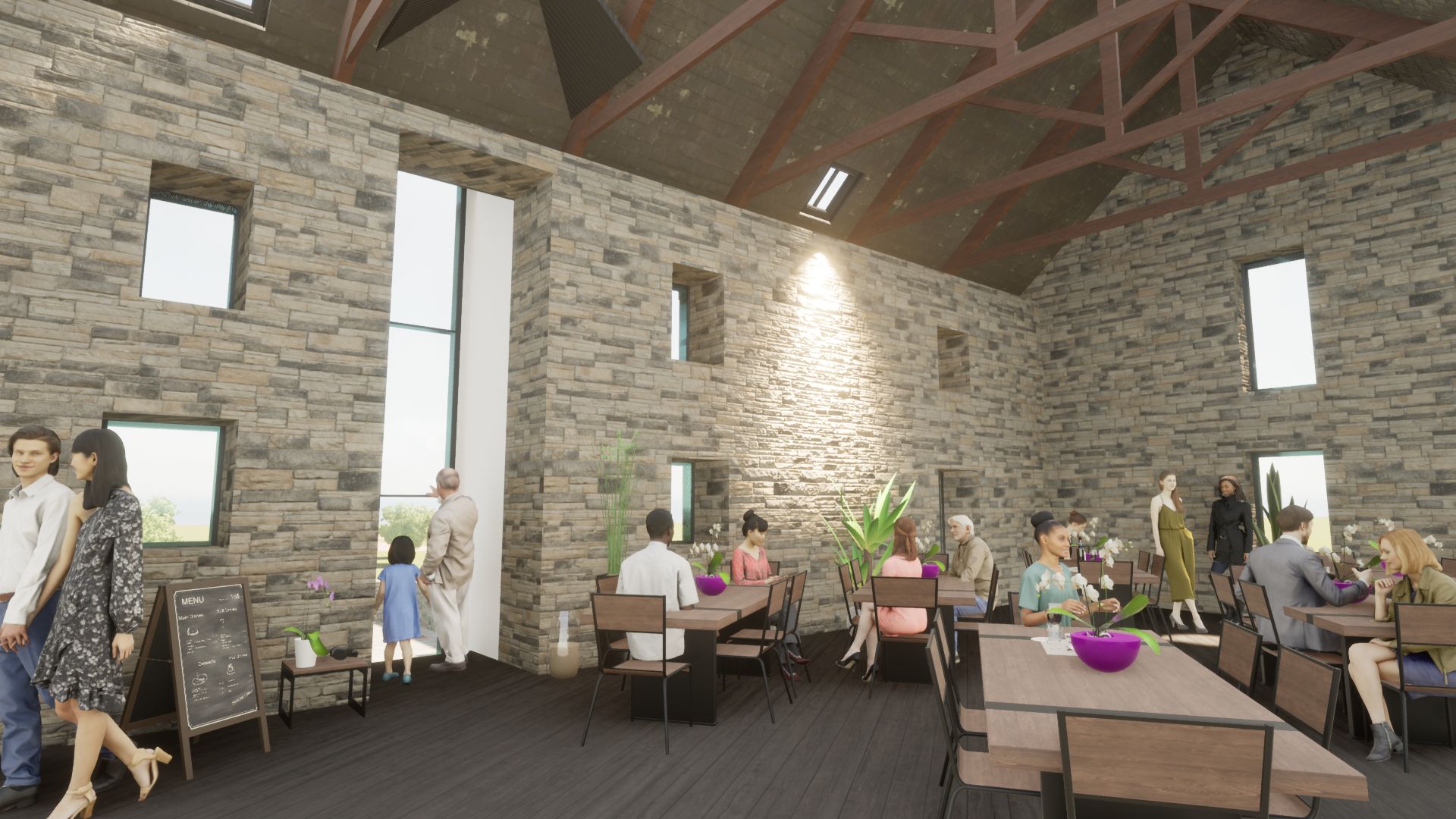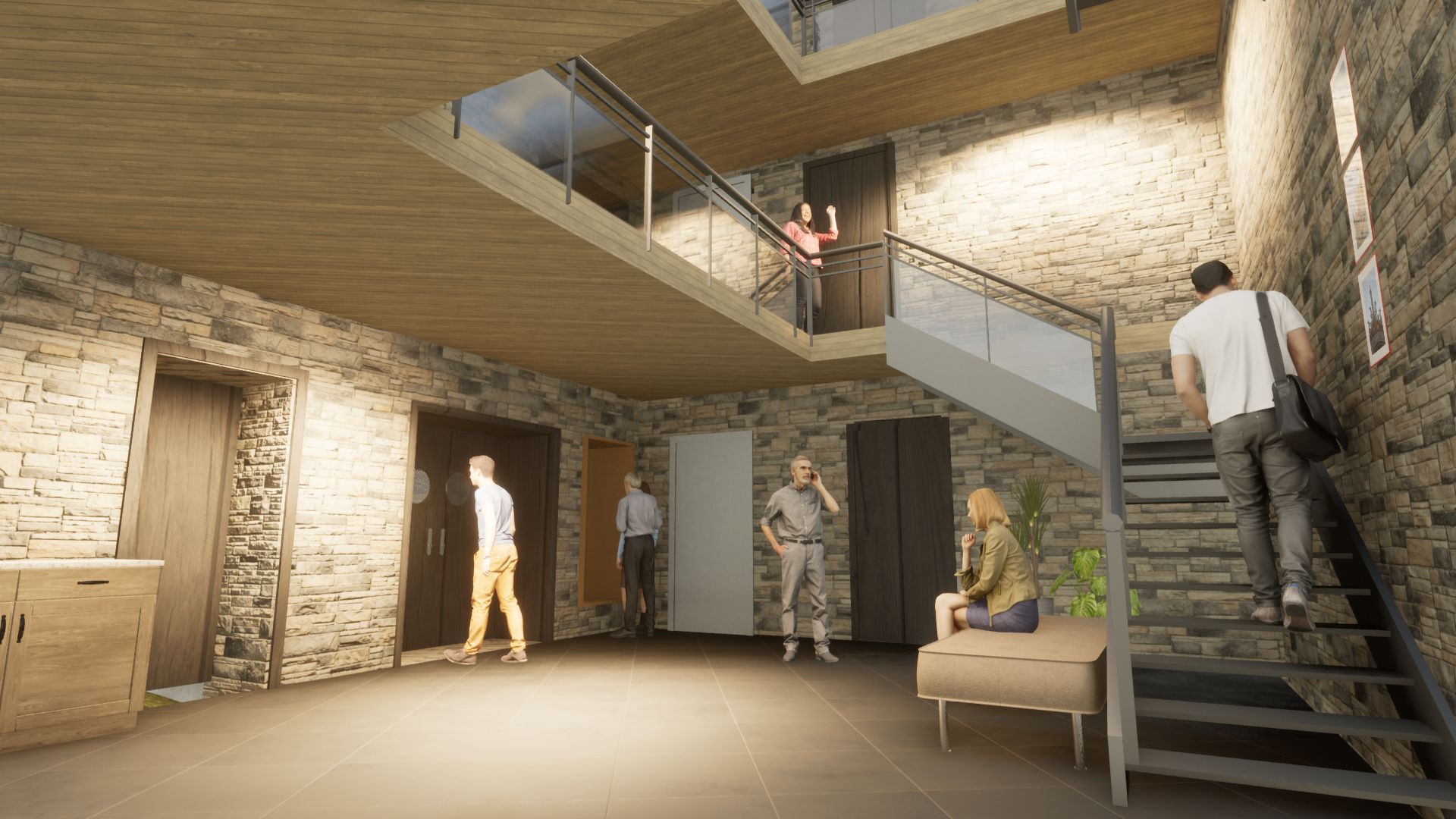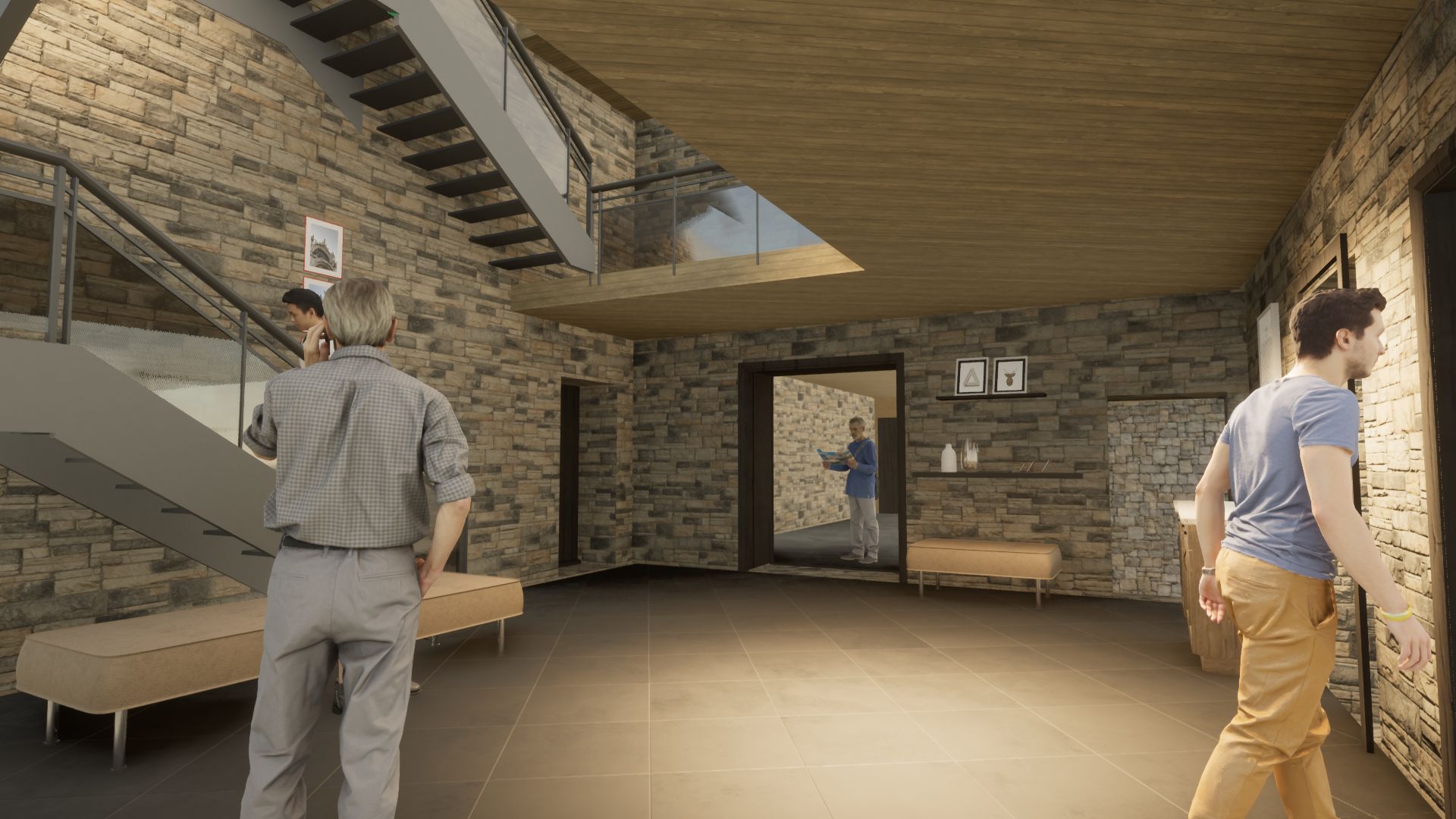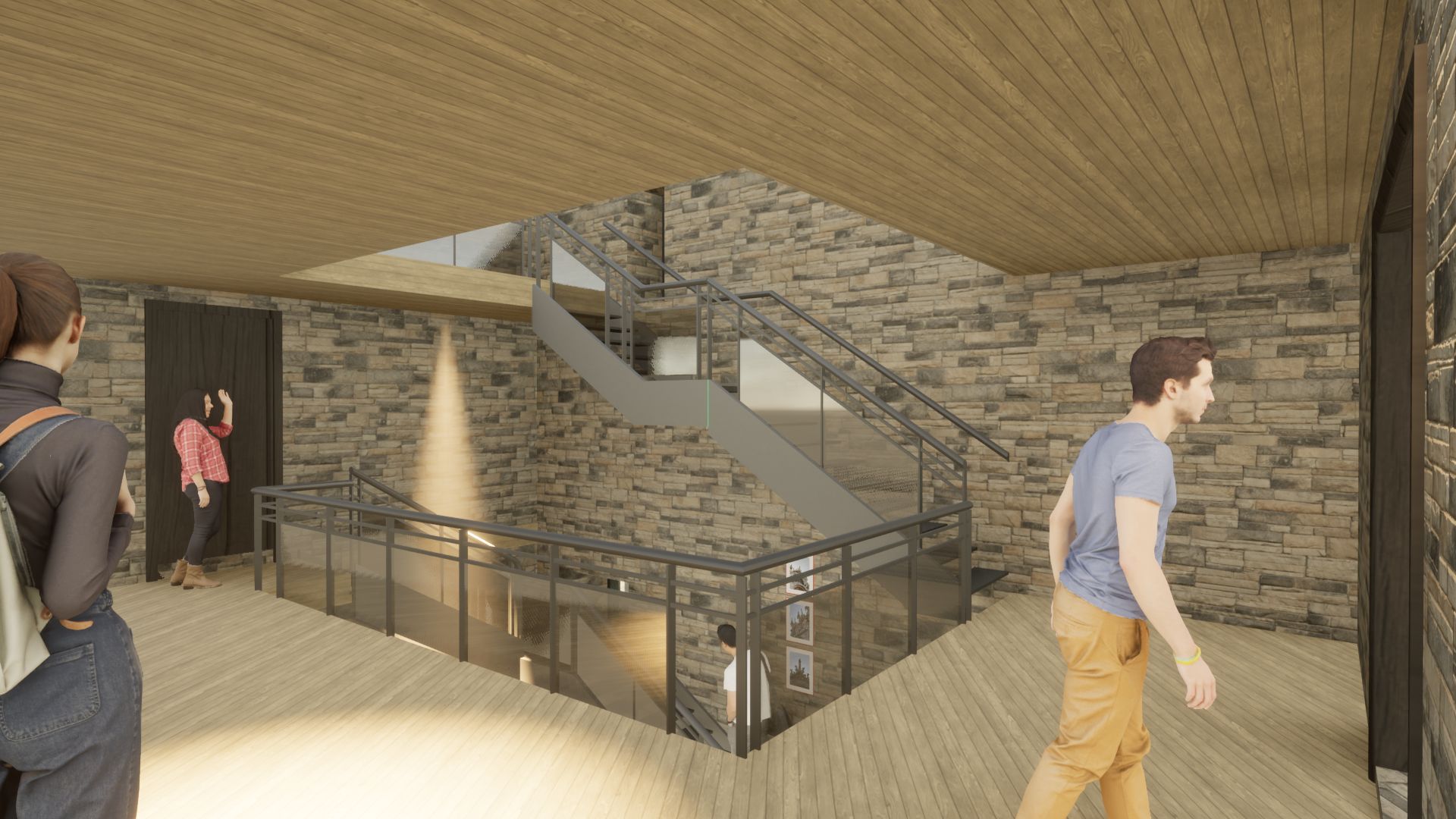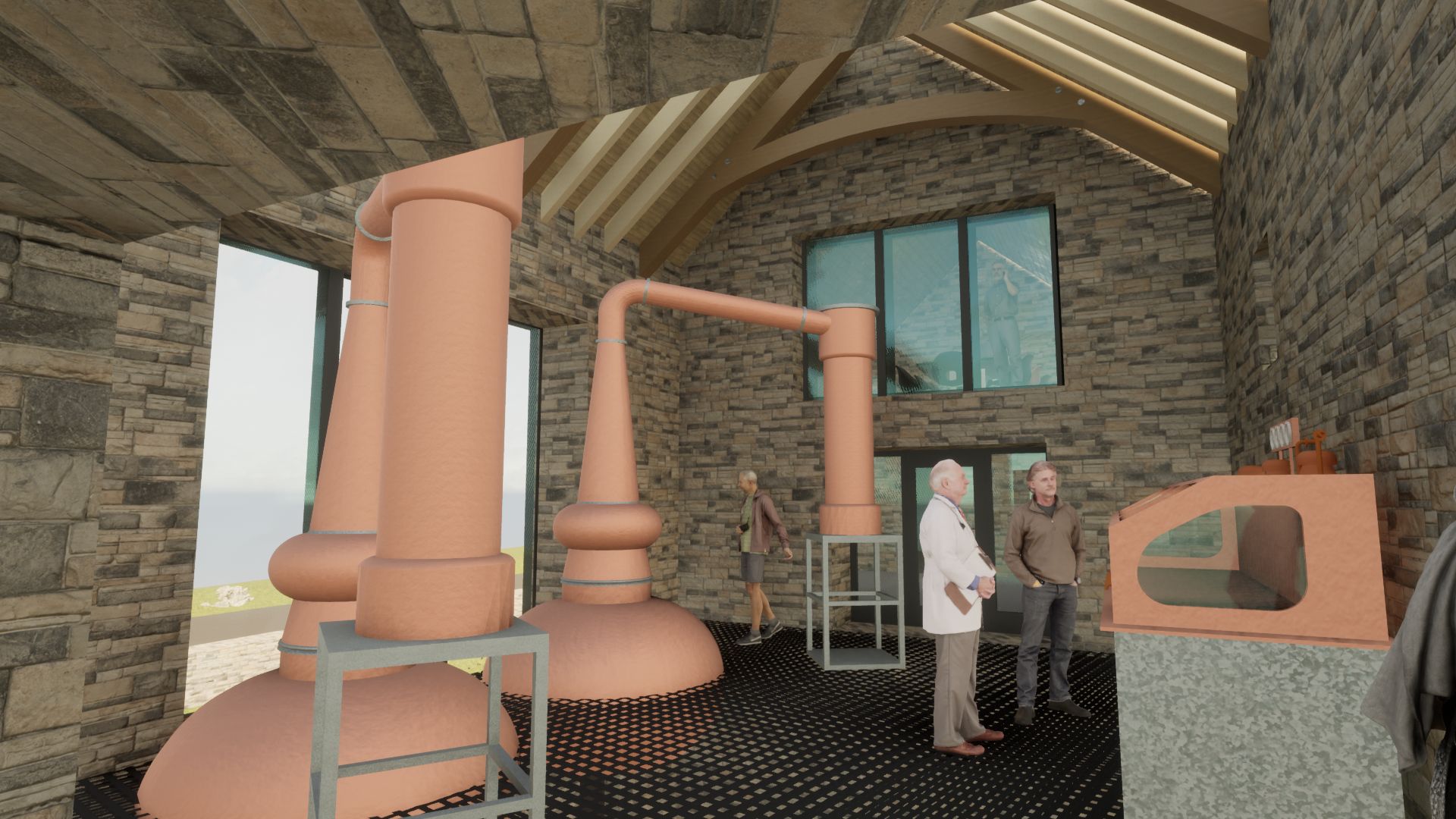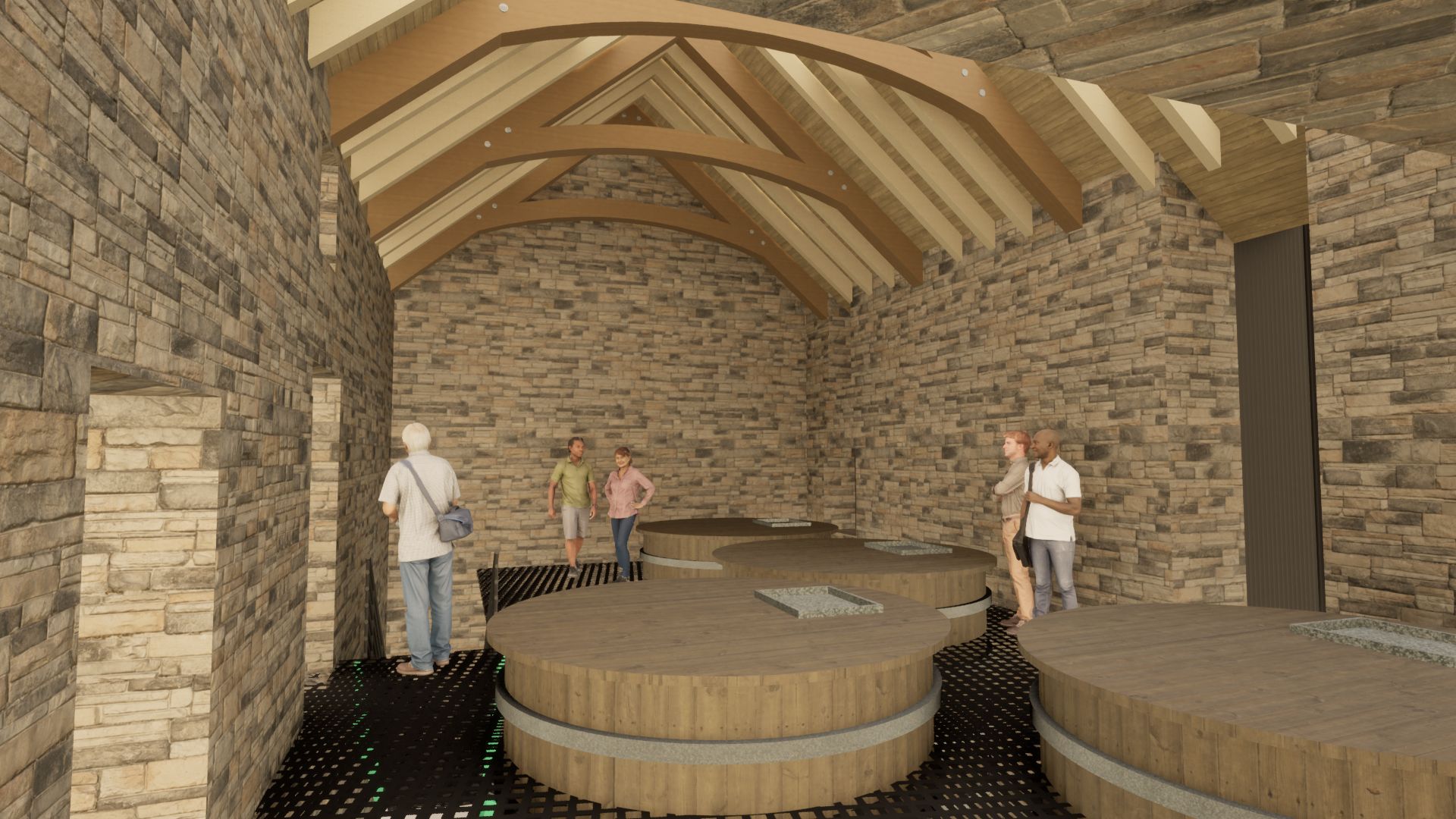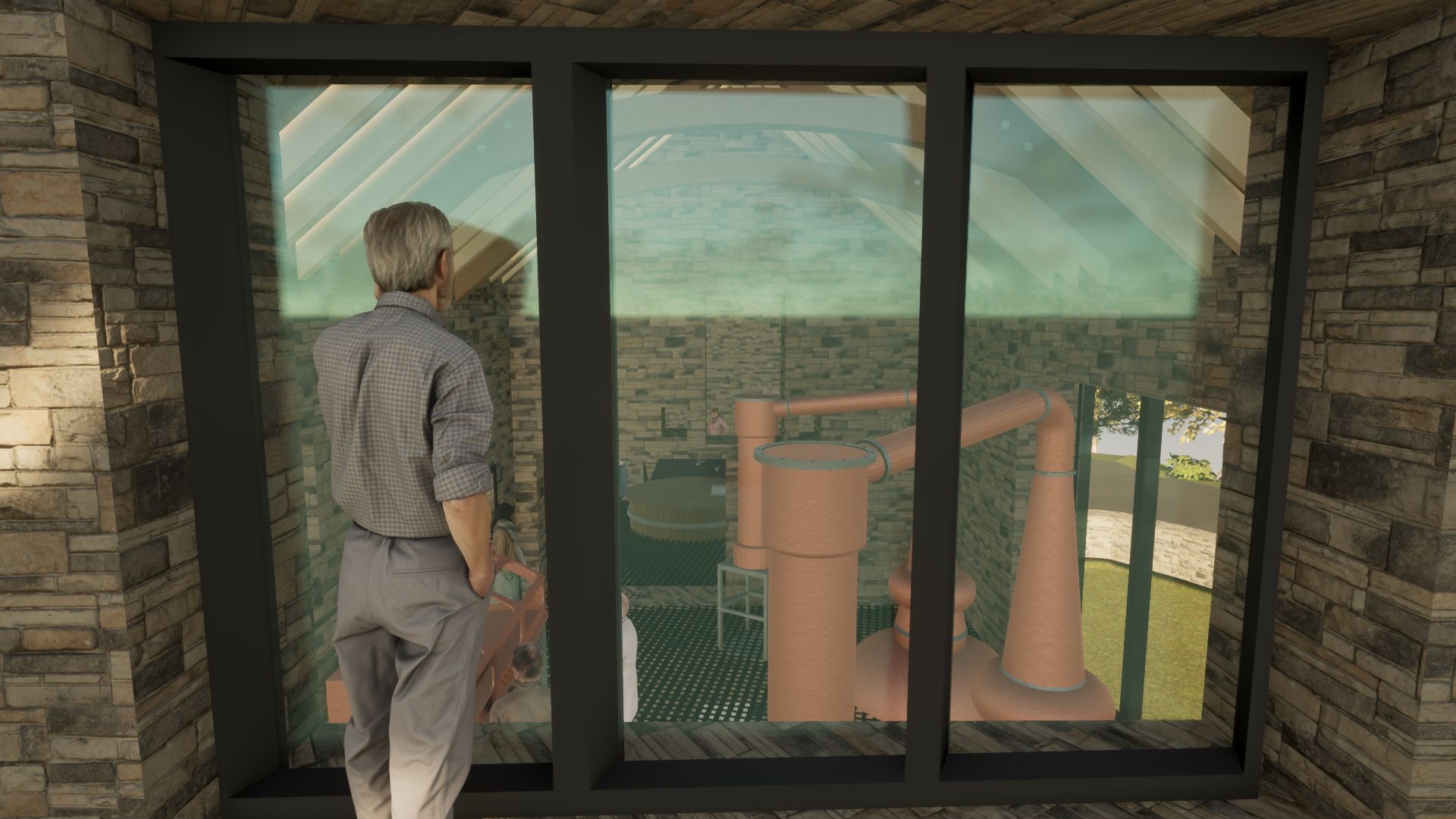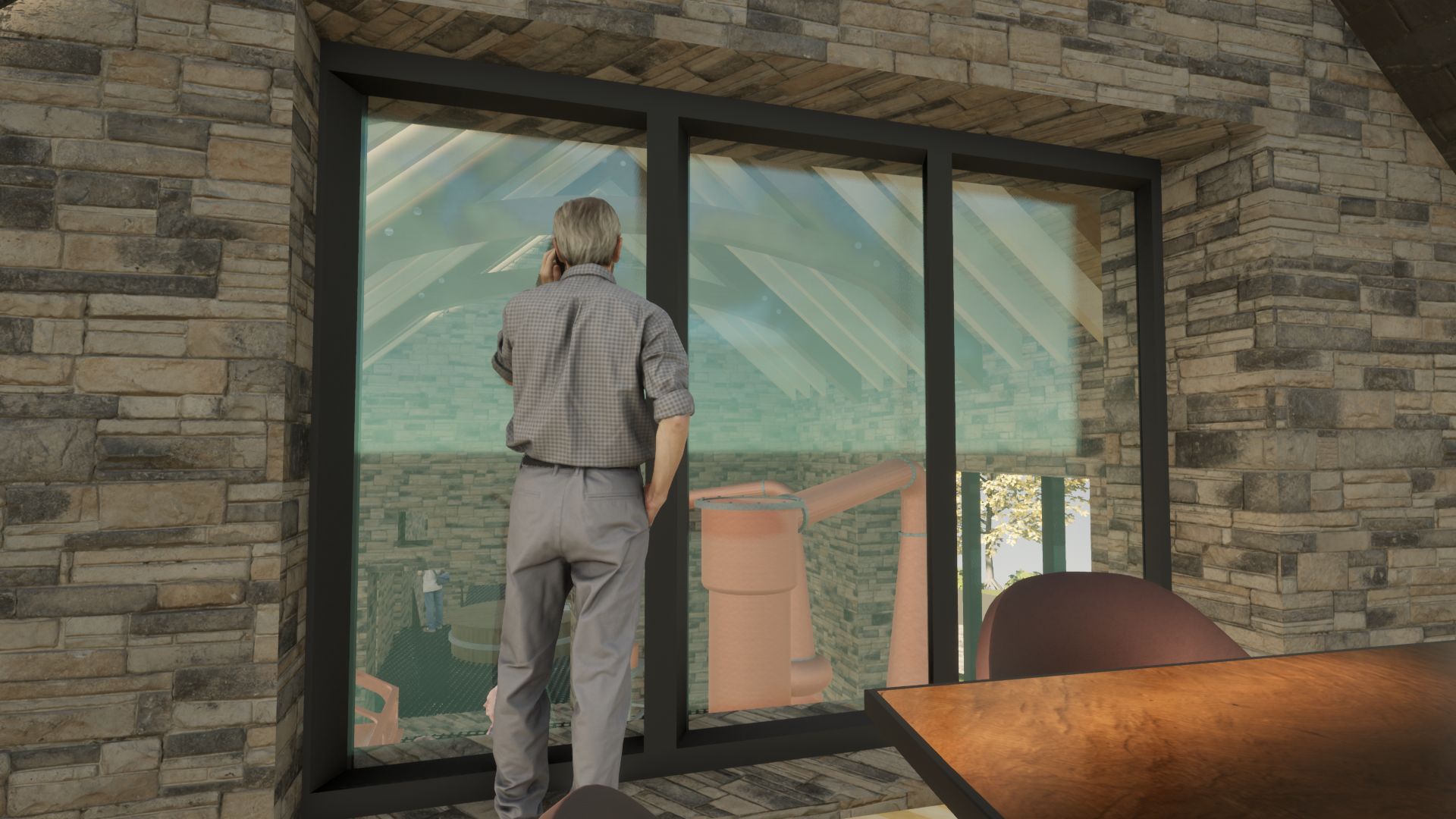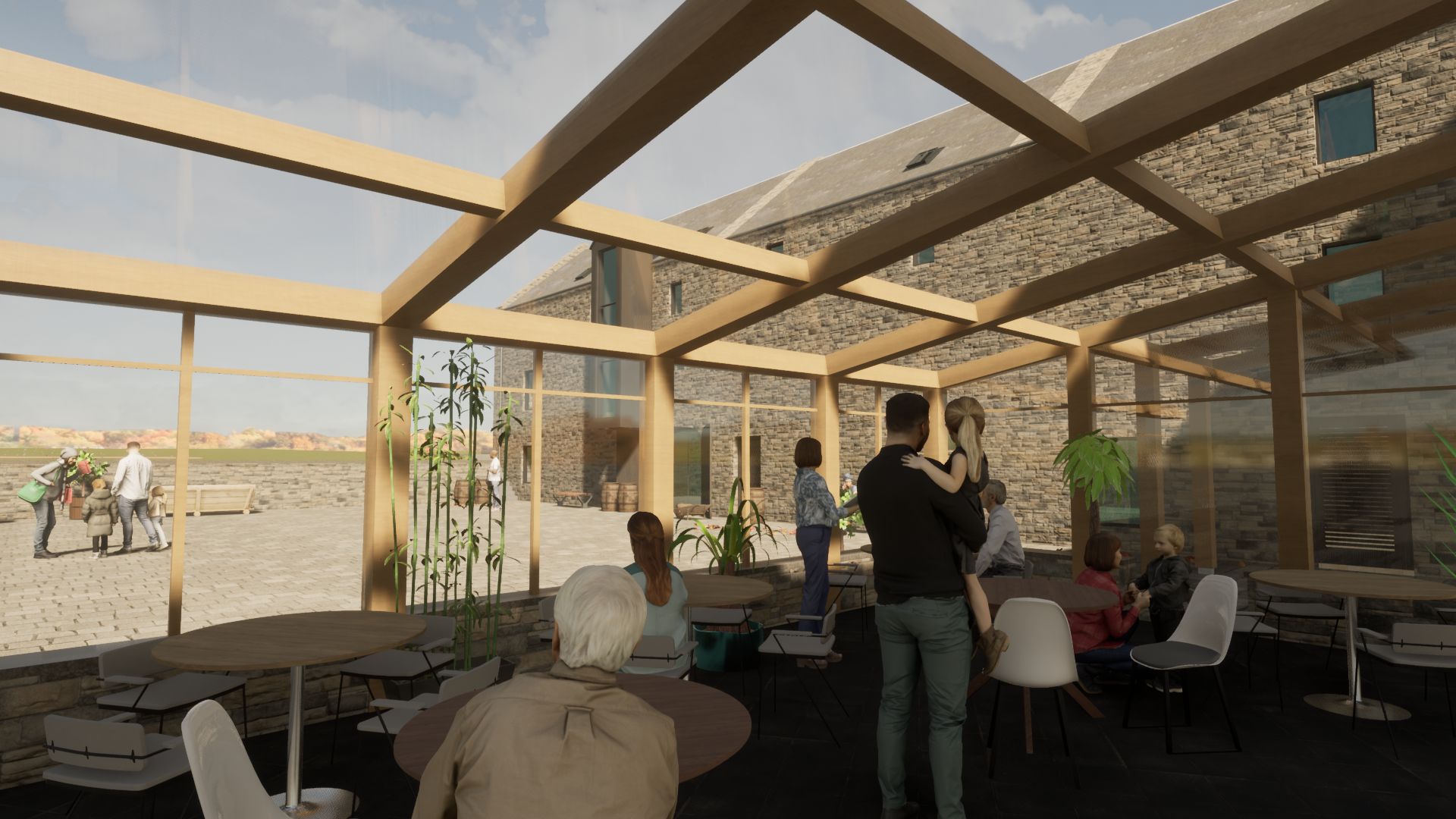A historic building anchored in the Caithness landscape.
Castletown Mill lies at the heart of a village steeped in history.
Located on the most northernly coast of the Scottish Mainland, Castletown is known as the Flagstone Village reflecting its association with the quarrying and export of Caithness flagstone. The mill was once part of the Castlehill Estate developed by James Traill (1758–1843), Sheriff Depute of Caithness who was married to Lady Janet Sinclair, second daughter of William Sinclair of Ratter, Earl of Caithness.
James Traill was an innovator and entrepreneur and when he inherited the Castlehill Estate the cornerstone of his business was the commercial exploitation of Caithness flagstone.
The quarrying of Caithness flagstone has taken place since the Scottish Neolithic Period (circa 3800 – circa 2500 BC). Caithness flagstone is a durable, smooth, and easy to split stone, so people have used it throughout history to construct such diverse things as tombs, fences, paving stones and even to make plates for cooking over an open fire. In the 19th century Caithness flagstone gained a world-wide reputation for durability and strength, making it a desirable product for street paving, the floors of buildings, and for the construction of the platforms and concourses of the new railway stations that were springing up across Great Britain.
James Traill was also an “Agricultural Improver” and he set about upgrading the farms and agricultural practices on his Castlehill Estate.
However, James Traill soon realised that without access to markets there was little point in improving agricultural yields so by 1793, he had erected a barley-mill, a corn-mill, a lint-mill, and a threshing machine to process the agricultural produce grown on his estate.
James Traill built the original part Castletown Mill, the north-south wing, circa 1818 as a starter enterprise for his heir George Traill (1788–1871). It ground grain grown on James Traill’s Castlehill Estate into flour to cater for the growing number of workers employed at his nearby Castlehill Pavement Works. Castletown Mill comprised living accommodation for the miller and his family, a central double kiln, grain stores, and projecting covered grain hoists.
The water to power the large water wheel located on the east gable of the mill came from the nearby Stannergill Burn. The water was diverted from the burn via a mill pond and sluices into an artificial channel known as a lade. The lade fed water to the mill wheel which powered the machinery required to grind the grain into flour. In the late 19th century Castletown Mill was extended, with the addition to the south of a large 3-storey range, which contained another kiln and grain stores. Castletown Mill processed grain into flour until the 1930s.
On 26th November 1913 at The Royal Hotel, Thurso the Castlehill and East Murkle part of the Traill Estate including Castletown Mill were sold at auction.
Benjamin J. Calder (1853–1921), Castletown Mill’s tenant miller purchased the mill for £550. It remained a working grain mill owned and operated by the Calder family until the 1930s.
However, by 1933 the business was bankrupt, and the Calder family sold Castletown Mill to William Mackenzie, a local farmer and butcher for a nominal sum. William Mackenzie ordered the removal of the kiln floor and fire box in the north-south wing along with the water wheel during the late 1930s to early 1940s. He also built a slaughterhouse adjacent to the west of the old wheelhouse.
The Royal Air Force requisitioned Castletown Mill during the Second World War to store equipment such as camp beds, blankets, sheets, and pillows required for the extra men the RAF planned to deploy to Caithness to assist with the defence of Scapa Flow. The RAF also built laundry buildings on the mill site and adapted the machinery still left at Castletown Mill to process the sand required for the construction of nearby RAF Castletown, which was initially built to provide a base for fighter cover for the Royal Navy Base at Scapa Flow. It later became an air-sea rescue base, before closing just after the end of the war in Europe. After the war, William Mackenzie utilised Castletown Mill as agricultural storage, and he rented the Miller’s House to his employees until the early 1960s.

In November 2020, after lying derelict for 32 years Castletown Mill was purchased by Dunnet Bay Distillers Ltd.
After securing a grant from Historic Environment Scotland and Planning Permission from the Highland Council we have started work revitalising Castletown Mill to become the brand home for Stannergill Whisky.
A Conservation Statement has been prepared for Castletown Mill to ensure that architectural and other features identified as historically significant are retained during conservation and revitalisation work and consideration is given to removing and/or replacing elements considered detrimental to the long-term maintenance of this iconic vernacular building. The Conservation Statement aims to enhance Castletown Mill’s national significance through exemplary intervention and custodianship based upon a thorough understanding of the building.
We are working with Audrey Young and Alice Calder Hill who are members of the family who owned and operated Castletown Mill as a working grain mill to ensure that the site is accurately interpreted. Alice Calder Hill, a Caithness based artist was the last person to be born in the Miller's House when Castletown Mill was still a working grain mill.
From Milling To Malting – a new sustainable beginning for a much loved vernacular building.

Dunnet Bay Distillers Ltd is currently giving Castletown Mill a new lease of life through a £4 million project to conserve and revitalise this important Grade B listed building (Listed Building Number: LB14012). Due to open to the public in Summer 2025 Castletown Mill will be a state-of-the-art craft whisky distillery and world class visitor experience.
Through intimate guided tours, tutored tastings, masterclasses, leisure learning workshops, living history demonstrations, and an annual programme of special exhibitions and events, a visit to Castletown Mill will offer a unique experience.
A permanent exhibition will celebrate the history of the mill building and its surrounding environs, explore whisky making and tell the stories of both Stannergill Whisky and the people who develop(ed) and work(ed) within the mill. The exhibition will communicate the importance of the place where Castletown Mill is located, and our unique Caithness whisky is lovingly distilled.
There will be something for everyone.
Castletown Mill Needs You – Share Your Memories

Do you or current/past members of your family have a connection to Castletown Mill, or perhaps you have occupational or wartime experience of the mill building and its environs?
Dunnet Bay Distillers Ltd are currently developing an exhibition that will interpret the mill building and its surrounding environs, which will include artefacts and stories about the history of the mill, and the people who built, develop(ed) and work(ed) within the building, communicating the importance of the place where Castletown Mill is located. We are looking for artefacts and stories that relate to any aspect of the history of Castletown Mill, from milling grain into flour, to the building’s use as a slaughterhouse and the role the mill played supporting RAF Castletown during the Second World War.
You can play a part in the development of the exhibition by donating or loaning any artefacts or keepsakes, photographs, or artwork, which relate to Castletown Mill to Dunnet Bay Distillers Ltd for display. Any artefacts that you wish to loan, or donate do not need to be old, valuable, or even unique – they just need to tell a story about Castletown Mill, the activities the mill was used for in the past and the people associated with this nationally important site. Any items that people wish to donate or loan to us will be very gratefully appreciated so please check out your lofts and cupboards, although we cannot promise to display everything in perpetuity. We would also like to hear from people who have memories of Castletown Mill which they would like to share with us.
To find out more or to arrange to loan or donate artefacts for display at Castletown Mill or to contribute your memories of Castletown Mill, please e-mail [email protected]
Caithness Community Milling History Project
Caithness Community Milling History is a community project which seeks to uncover the stories, images and people involved in the milling industry in Caithness.
Led by the John O'Groats Mill Trust, Dunnet Bay Distillers Ltd and Nucleus: The Nuclear and Caithness Archives, it will provide learning, sharing and engagement activities for groups and individuals across the county.
If you or a member of your family or community worked in a Caithness mill, lived near one or used the mill or its products, we'd love to hear from you! Stories, photographs, and documents can help us build up a picture of those who lived, worked, and interacted with the mill industry over time. Even if you have no direct connection with milling, but are keen to learn more, there will be opportunities to help uncover and archive stories and information.
Are you a local history group or have a special interest in one or more of the mills? We'd like to help guide you to carry out research on your local mill and its history.
To keep up to date with opportunities and the progress of the project, follow the Facebook page or send an e-mail to [email protected] to add your name to the mailing list. Further information on how to get involved will follow as the project gets up and running in 2024.



